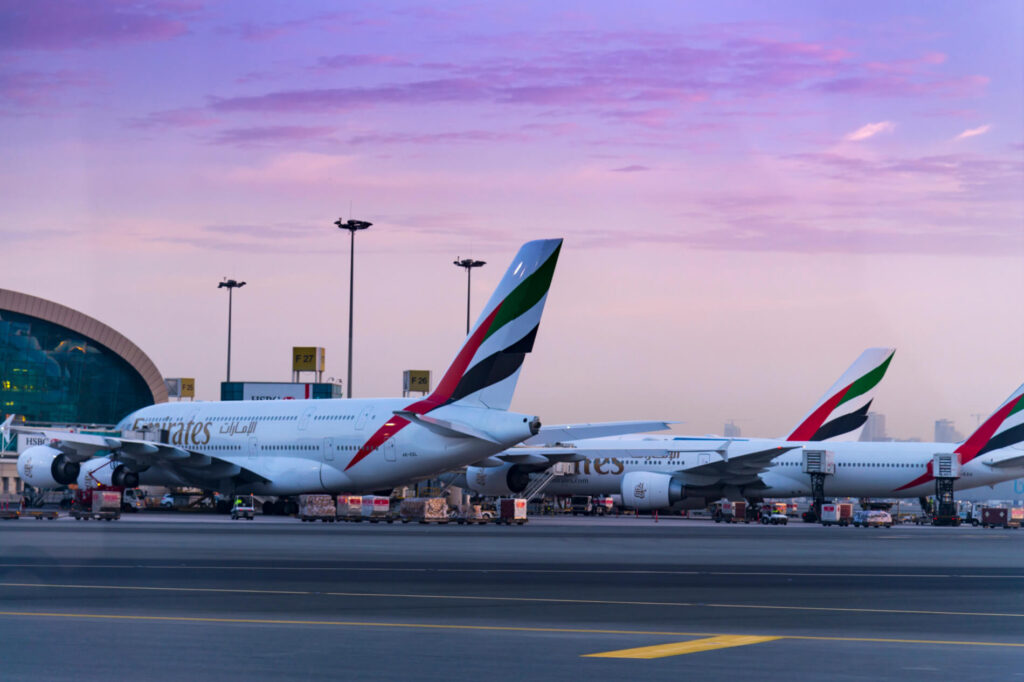A limited domestic network, an all-wide-body aircraft fleet and reliance on a hub to feed its operations: that was the cocktail that Emirates Airline held in its hand when the current crisis unfolded. Nevertheless, the Dubai-based airline had to navigate its way through the situation with the cards it held in its hand. How did they do it?
Emirates Airline had to enact swift changes. It started to shift to more point-to-point operations, as highlighted by its own Chief Operating Officer (COO) Adel Al Redha, who had previously stated that transfer and direct operations went from a 70/30 split to a 50/50 split.
It also slowly started to reopen its network to various destinations, including expanding its Airbus A380 network to six cities, with the latest being Moscow, Russia. The A380, which was largely written off by other airlines, has slowly come back to service with Emirates. All in all, the airline restarted flights to 99 destinations – prior to the crisis, its network spanned across 157 cities.
Importance of remaining active
The flag carrier of Dubai has reopened its bars and showers onboard the Airbus A380, “under the in-flight protocols that we have in regard to distancing and everything else,” noted Emirates president Tim Clark in an interview on CAPA Live event.
“There’s quite a pressure on us to try and get back to the product offering that we always had,” Clark added.
An often under-looked aspect of the crisis is the fact that with little flying that is done from the passengers’ perspective, loyalty starts to slowly tear itself apart. After all, travelers will return to the skies, since many of those travelers have not been on an aircraft for a long time. The rising popularity of the so-called flights-to-nowhere has continued to rise, as tickets onboard these flights have sold out within minutes, proving that people are desperate to fly. For example, Qantas’ tour around Australia was fully booked within the first 10 minutes after the airline launched the tickets publicly.
“My belief is that the demand will return in a very robust manner, particularly because it was so suppressed the last 10 months and is likely to continue to be suppressed for at least another six to nine months,” remarked the Emirates executive.
In terms of their liquidity and cash reserves, airlines have enacted to use different tools to ensure they have enough to survive. But they also need to be mindful of the fact that while they use these tools, they must remain to be known entities if they want to survive in a post-crisis world, according to Clark.
“Whether you attend to products through physical manifestation, whether it would be bars or showers on the A380, or the continued use of your marketing tools, to ensure that your brand remains at the forefront of people’s minds on a first-recall basis. We don’t want people to think that we are out of the game.”
Looking for revenue
The vast international network has presented a problem for Emirates. The company continues to rely on respective government decisions as to whether passengers are allowed to board a flight and not have to quarantine upon arrival. No unified approach towards self-isolation has limited potential destinations that can be offered to passengers. Nevertheless, in order to survive to eventually welcome the currently suppressed demand, airlines have to cover their short-term expenses. And cargo became the gold mine for many, including Emirates.
As paradoxical as it may be, the fact that many flights across the globe were canceled or are running at very reduced frequencies, has propelled cargo rates up. A sector that has bled severely throughout 2019 was now in the spotlight – according to the International Air Transport Association (IATA), air freight demand fell to levels previously seen only in 2009.
“The revenue we’re getting from cargo is substantial. Not only it allows us to cover our operating costs, but it also allows us to make profits,” said Tim Clark. Many new routes, which were added throughout 2020, are reliant on cargo, according to the executive. Despite others laying out predictions that cargo revenues would die down, the reality is much different, Clark remarked.
“It continues to be strong. That allows us to open around 70 to 80 destinations at the moment, primarily driven by cargo demand.”

